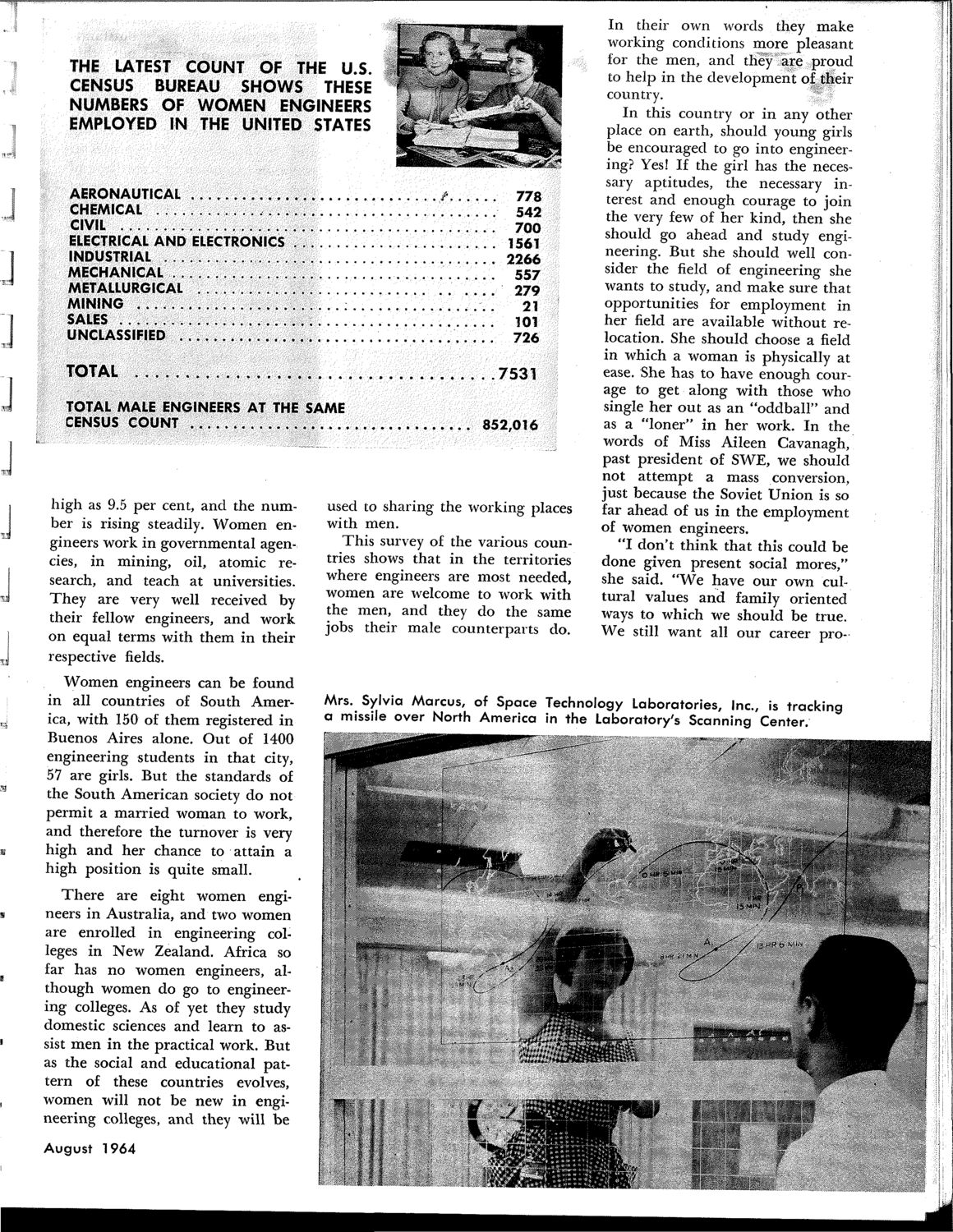| |
| |
Caption: SWE - News Clippings Book
This is a reduced-resolution page image for fast online browsing.

EXTRACTED TEXT FROM PAGE:
THE LATEST COUNT OF THE U.S. CENSUS BUREAU SHOWS THESE NUMBERS OF WOMEN ENGINEERS EMPLOYED IN THE UNITED STATES AERONAUTICAL CHEMICAL CIVIL ELECTRICAL AND ELECTRONICS INDUSTRIAL MECHANICAL METALLURGICAL MINING SALES UNCLASSIFIED t. . 778 542 700 1561 2266 557 279 21 101 726 TOTAL TOTAL MALE ENGINEERS AT THE SAME CENSUS COUNT 7531 852,016 high as 9.5 per cent, and the number is rising steadily. Women engineers work in governmental agencies, in mining, oil, atomic research, and teach at universities. They are very well received by their fellow engineers, and work on equal terms with them in their respective fields. Women engineers can be found in all countries of South America, with 150 of them registered in Buenos Aires alone. Out of 1400 engineering students in that city, 57 are girls. But the standards of the South American society do not permit a married woman to work, and therefore the turnover is very high and her chance to attain a high position is quite small. There are eight women engineers in Australia, and two women are enrolled in engineering colleges in New Zealand. Africa so far has no women engineers, although women do go to engineering colleges. As of yet they study domestic sciences and learn to assist men in the practical work. But as the social and educational pattern of these countries evolves, women will not be new in engineering colleges, and they will be August 1964 used to sharing the working places with men. This survey of the various countries shows that in the territories where engineers are most needed, women are welcome to work with the men, and they do the same jobs their male counterparts do. In their own words they make working conditions more pleasant for the men, and they are proud to help in the development of their country. In this country or in any other place on earth, should young girls be encouraged to go into engineering? Yes! If the girl has the necessary aptitudes, the necessary interest and enough courage to join the very few of her kind, then she should go ahead and study engineering. But she should well consider the field of engineering she wants to study, and make sure that opportunities for employment in her field are available without relocation. She should choose a field in which a woman is physically at ease. She has to have enough courage to get along with those who single her out as an "oddball" and as a "loner" in her work. In the words of Miss Aileen Cavanagh, past president of SWE, we should not attempt a mass conversion, just because the Soviet Union is so far ahead of us in the employment of women engineers. "I don't think that this could be done given present social mores," she said. "We have our own cultural values and family oriented ways to which we should be true. We still want all our career pro- Mrs. Sylvia Marcus, of Space Technology Laboratories, Inc., is tracking a missile over North America in the Laboratory's Scanning Center. <*•.*-..,..• m Ski / * N / 7t *?K tf % •»••£ • J S * ? — «» J£3K WES :tfi(i""W
| |